Author:
Mark Sanchez
Date Of Creation:
8 January 2021
Update Date:
1 July 2024

Content
In this article, we will tell you how to connect and configure a second monitor on a computer or laptop running Windows 10. To do this, the computer must have at least one free video connector.
Steps
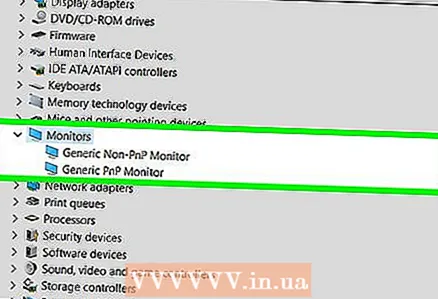 1 Make sure you can connect a second monitor to your computer. Windows 10 supports multiple monitors, which is not the case with all graphics cards. To find out if you can connect a second monitor to your computer / laptop, follow these steps:
1 Make sure you can connect a second monitor to your computer. Windows 10 supports multiple monitors, which is not the case with all graphics cards. To find out if you can connect a second monitor to your computer / laptop, follow these steps: - Computer: Find a free video connector on the back of your computer. If you find it near or above the connector where the first monitor is connected, you can connect a second monitor to the computer.
- Notebook: If your laptop has any kind of video connector (such as HDMI, DisplayPort, or USB-C), you can connect a monitor to it.
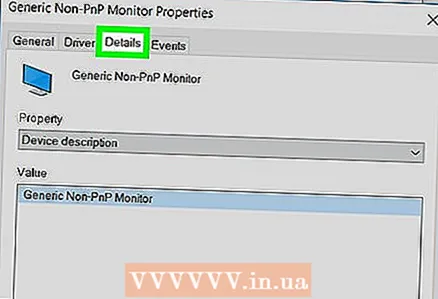 2 Find out which cable is needed to connect the monitor. In most cases, you will need an HDMI or DisplayPort cable. If you have an older computer or monitor, buy a VGA cable with trapezoidal plugs.
2 Find out which cable is needed to connect the monitor. In most cases, you will need an HDMI or DisplayPort cable. If you have an older computer or monitor, buy a VGA cable with trapezoidal plugs. - If an available video connector on your computer matches the video connector on a second monitor, use a cable that matches both connectors.
- If the video connector on your computer is different from the video connector on your monitor, buy a dedicated cable (such as USB / C to HDMI) or an adapter (such as VGA to HDMI).
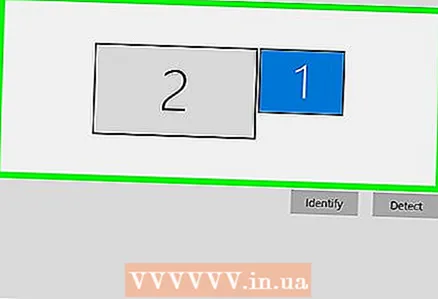 3 Position the second monitor. If you want to stretch your desktop across both monitors, place it to the right of the first monitor.
3 Position the second monitor. If you want to stretch your desktop across both monitors, place it to the right of the first monitor. - If you are duplicating the image on a second monitor, you can put it anywhere.
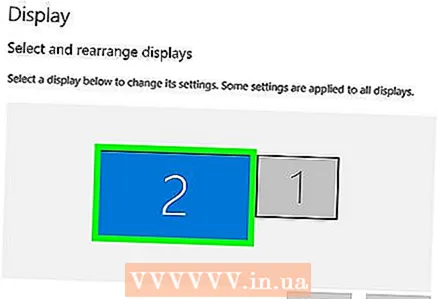 4 Connect a second monitor to your computer. Connect one end of a video cable (such as HDMI) to a video connector on your computer and the other end to a video connector on a second monitor.
4 Connect a second monitor to your computer. Connect one end of a video cable (such as HDMI) to a video connector on your computer and the other end to a video connector on a second monitor. - If you are using an adapter, connect the cable (s) to the adapter; also, the adapter may need to be connected to a power source first.
 5 Turn on the second monitor. Press the power button
5 Turn on the second monitor. Press the power button  .
. 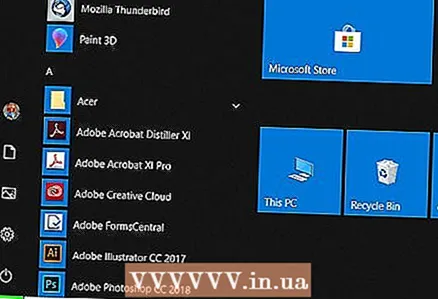 6 Open the start menu
6 Open the start menu  . Click on the Windows logo in the lower left corner of the first monitor.
. Click on the Windows logo in the lower left corner of the first monitor. 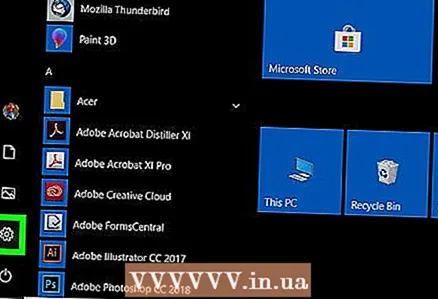 7 Click "Options"
7 Click "Options"  . It's a gear-shaped icon in the lower-left side of the Start menu.
. It's a gear-shaped icon in the lower-left side of the Start menu.  8 Click on System. It's a laptop-shaped icon in the preferences window.
8 Click on System. It's a laptop-shaped icon in the preferences window. 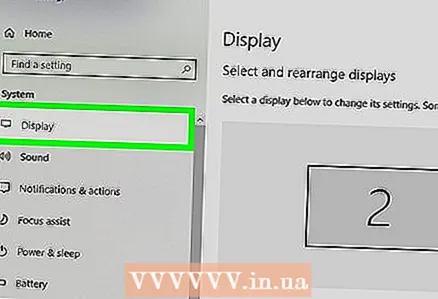 9 Click on the tab Screen. You will find it at the top left of the page.
9 Click on the tab Screen. You will find it at the top left of the page. 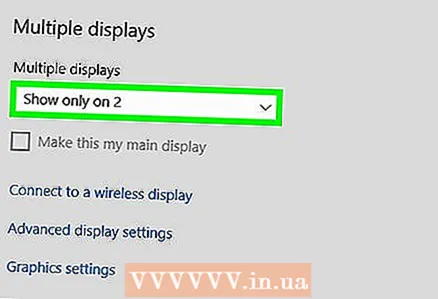 10 Open the Multiple Screens menu. It's at the bottom of the page.
10 Open the Multiple Screens menu. It's at the bottom of the page. 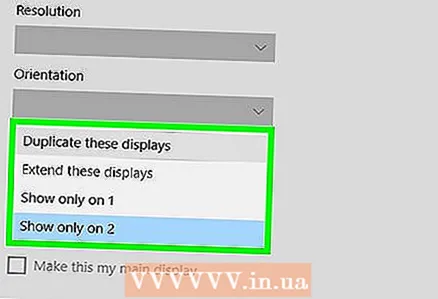 11 Select the option you want. In most cases, you will need to select "Extend These Screens" so that the desktop stretches across both monitors, that is, it becomes larger. You can also choose one of the following options:
11 Select the option you want. In most cases, you will need to select "Extend These Screens" so that the desktop stretches across both monitors, that is, it becomes larger. You can also choose one of the following options: - Duplicate these screens: The second monitor displays the same picture as the first.
- Show only on 1: The picture will be displayed on the first monitor only, and the screen on the second monitor will be dark.
- Show only 2: The picture will be displayed on the second monitor only, and the screen on the first monitor will be dark.
- Additional options may appear in the menu depending on the second monitor.
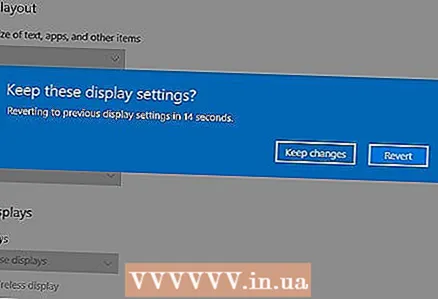 12 Save your changes. Click Apply> Save Changes. The computer will start working with the second monitor as shown.
12 Save your changes. Click Apply> Save Changes. The computer will start working with the second monitor as shown.  13 Use a second monitor. If you extended the desktop to both monitors, move your mouse cursor to the right border of the first monitor - as soon as you move the cursor to the right, it will appear on the second monitor.
13 Use a second monitor. If you extended the desktop to both monitors, move your mouse cursor to the right border of the first monitor - as soon as you move the cursor to the right, it will appear on the second monitor.
Tips
- If you take a screenshot with the desktop stretched across both monitors, you get a panoramic shot.
- An HD TV can be used as a second monitor.
Warnings
- Do not use force when connecting cables.
- If you cannot connect a second monitor to your computer, install a new graphics card.



